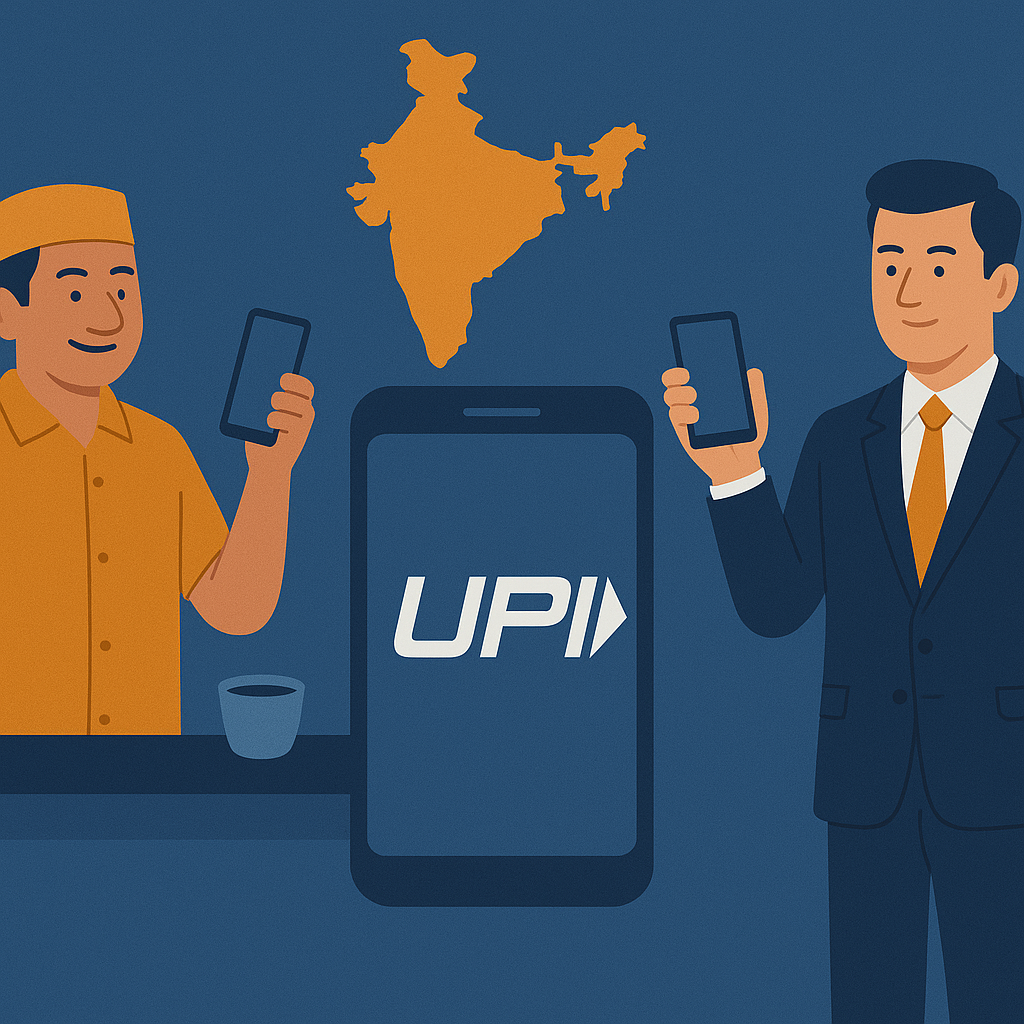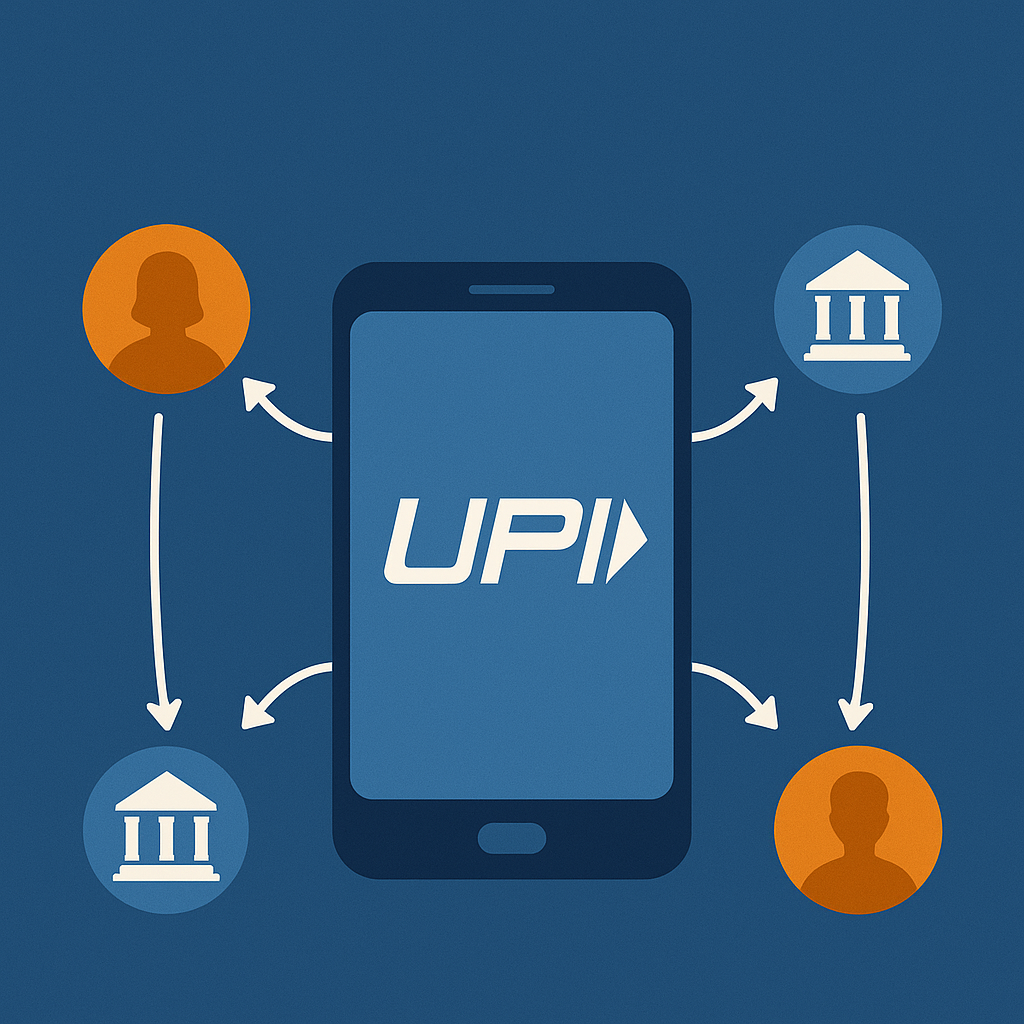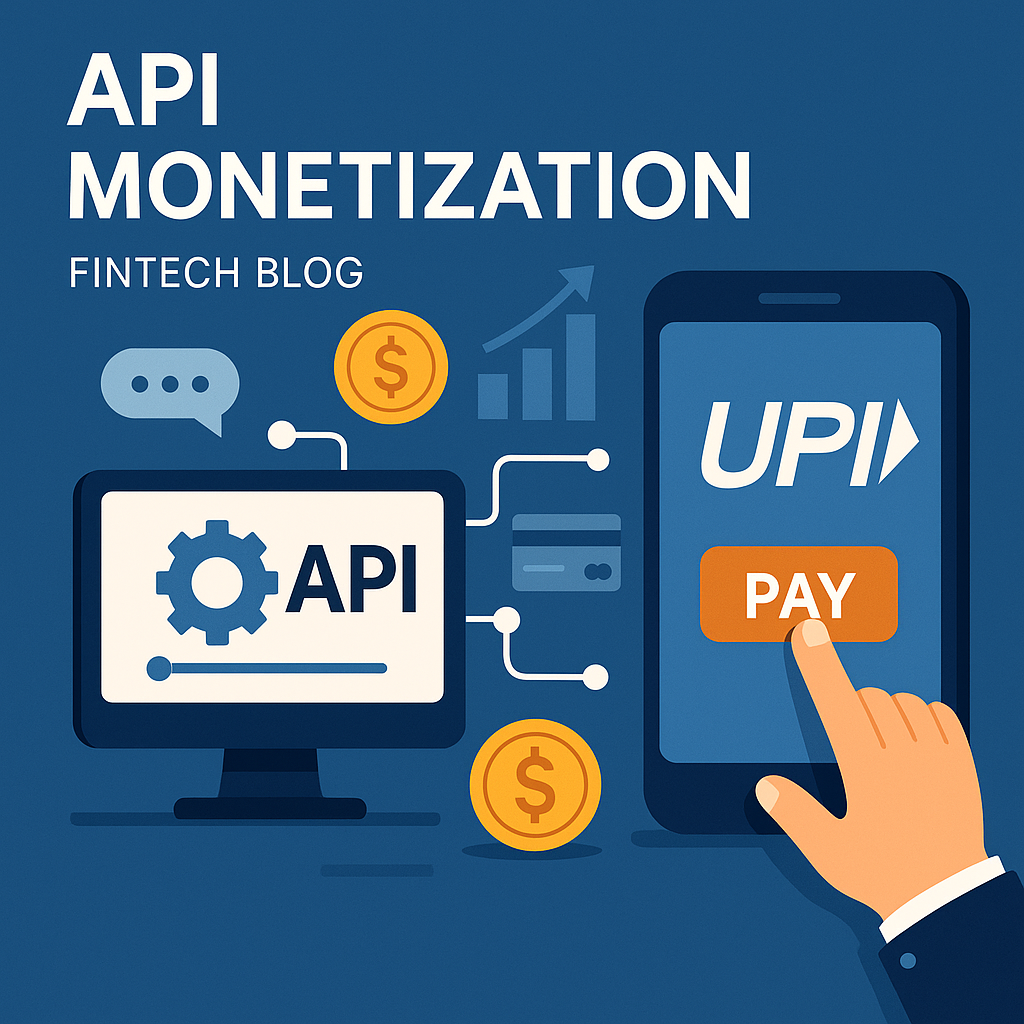
From tea vendors to corporations – UPI democratized payments for 350M+ Indians
“In 2016, India did something unprecedented—it made digital payments as easy as texting.”
That’s the story of Unified Payments Interface (UPI), a system so seamless it now processes more transactions than Visa and Mastercard combined in India. What began as infrastructure became culture—today, “Scan QR” is more common than “Do you have change?”
The Genius Behind UPI’s Design
Solving India’s Payment Chaos
Pre-2016, digital payments were fragmented:
- Bank silos: 57 different mobile banking apps
- Card dependence: Only 3% penetration
- Cash dominance: 95% of transactions
Three Radical Principles
- Virtual Payment Address:
name@upireplaced account numbers - Real-time settlement: Under 2 seconds
- Open ecosystem: Any app could connect

The elegant simplicity of UPI’s interoperable design
Numbers That Redefined Possibility
| Year | Users (M) | Monthly Transactions (B) |
|---|---|---|
| 2017 | 17 | 0.03 |
| 2020 | 150 | 2.0 |
| 2023 | 350+ | 10.0+ |
Growth Rocket Fuel
- JAM Trinity: Jan Dhan + Aadhaar + Mobile
- Zero MDR: No merchant fees
- QR Standardization: Even illiterate vendors could adopt
The Invisible Behavioral Revolution
UPI’s real triumph wasn’t technical—it was rewiring money habits:
From students to seniors – UPI became India’s financial equalizer
Cultural Shifts
- Language democratization: “UPI hai na?” works across dialects
- Trust in digital: Grandma sending money via QR
- New micro-economies: Gig workers getting instant payments
What’s Next? UPI as India’s Financial OS
The Coming Evolution
- UPI Credit: Buy-now-pay-later at checkout
- Global expansion: Already live in Singapore/UAE/France
- Voice payments: For non-smartphone users
- B2B flows: Supply chain and payroll automation
A Builder’s Playground
For developers and entrepreneurs, UPI offers:
- API-first infrastructure to create niche solutions
- Behavioral data to design better financial products
- Embedded finance opportunities at scale
Final Thought: Protocol Over Product
“UPI succeeded because it was infrastructure, not an app neutral rails anyone could build upon.”
What started as a government initiative has become the default mode of payment in India. But UPI isn’t just replacing cash it’s replacing how India thinks about money movement. From QR codes to voice-enabled payments and embedded credit, the story of UPI is still unfolding.
As India’s next 500M users come online, UPI’s true legacy will be proving that the most powerful technologies are those that disappear into daily life while quietly expanding what’s possible.
Infrastructure shapes behavior. And UPI is quietly shaping the financial behavior of a billion people.

Leave a Reply